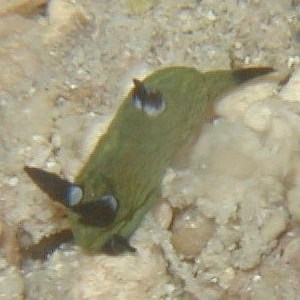
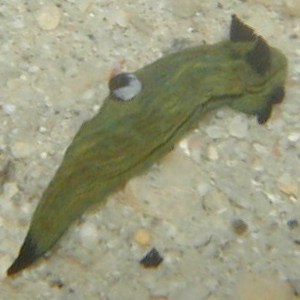
Tambja cf. amakusana
Order: NUDIBRANCHIA
Suborder: DORIDINA
Superfamily: ANADORIDOIDEA
Family: Polyceridae
Subfamily: Nembrothinae
PHOTO
Zamami Island, Okinawa, Japan, December 2000. Depth: 11m. Length: 5mm. PHOTOS: Rie Nakano
See Rie Nakano's message below.
Authorship detailsRudman, W.B., 2001 (January 23) Tambja cf. amakusana [In] Sea Slug Forum. Australian Museum, Sydney. Available from http://www.seaslugforum.net/find/tambcfamak
Related messages
Tambja cf. amakusana from Malaysia
February 14, 2006
From: Ho Wei Kwok Alvin
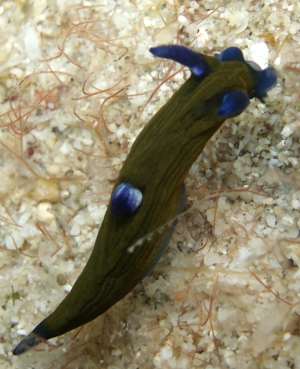
Hi Bill,
Found this tiny nudi diving under the jetty at Pulau Dayang. The closest match i found on your website is Tambja amakusana. I found it on top of a rotting log. Appreciate your input.
Locality: Pulau Dayang Jetty, Pulau Dayang, West Malaysia, South China Sea. Depth: 4 m. Length: 10-20 mm. 1 May 2005. Sand Bottom. Photographer: Alvin Ho
Thanks,
Alvin
howeikwok@hotmail.com
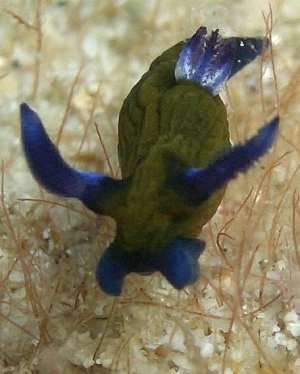
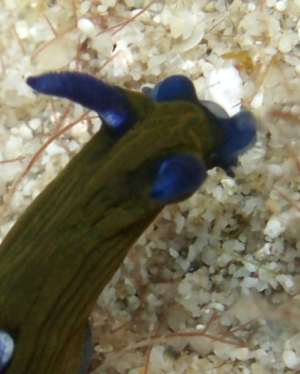
Dear Alvin,
It is certainly the same as the animal I am calling Tambja cf amakusana but I suspect it is not true Tambja amakusana.
Best wishes,
Bill Rudman
Tambja amakusana from Japan
January 29, 2001
From: Rie Nakano


Dear Bill,
I found this tiny little opisthobranch at Zamami Island, Okinawa, Japan,
December 2000. Depth: 11m Length:5mm
It was found in dead coral.
Dr.Bob Bolland says ;
"The nearest to anything I've seen here is Tambja amakusana. Possibly it's a juvenile Tambja morosa. Quite likely it's an undescribed species".
Sincerely,
Rie
rie@street.ne.jp
Nakano, R., 2001 (Jan 29) Tambja amakusana from Japan. [Message in] Sea Slug Forum. Australian Museum, Sydney. Available from http://www.seaslugforum.net/find/3545Dear Rie,
From my reading of Baba's description of the colour of his Tambja amakusana, your animal matches it quite well:
"Green colour of body above and below uniformly yellowish green (= grass green) without any trace of spots. The rhinophoral clavi yellow and the branchial rachides yellowish green. There are deep blue (= indigo blue) markings visible on the tips of the rhinophores, branchial plumes and tail"
In your photo however, the whole of the rhinophore club is dark blue, rather than the tip. Unfortunately the species was described from a single specimen so we cannot say how much colour variation is likely to occur in this species. Photos of animals matching Baba's description can be found in Suzuki Keiu's book on Izu Peninsula, Atsushi Ono's book on Kerama Island and Bob Bolland's website.
Perhaps we should call it Tambja cf. amakusana at present.
Reference:
Baba, K. 1987. Two new green coloured species of Tambja from Japan (Nudibranchia: Polyceridae). Venus, Japanese Journal of Malacology, 46(1): 13-18.
Best wishes,
Bill Rudman.
